Urim and Thummim as a Metaphor for Science
By Alexander Poltorak Introduction In the first installment of this essay, “Collapsing the Wave Function of Urim and Thummim,”[1] we discussed the inherent duality of
By Alexander Poltorak Introduction In the first installment of this essay, “Collapsing the Wave Function of Urim and Thummim,”[1] we discussed the inherent duality of
By Alexander Poltorak Introduction The relationship between the laws of physics and the conditions necessary for life is among the most profound mysteries in both
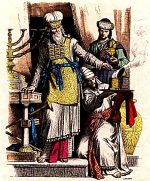
By Alexander Poltorak Dedicated to the refuah shaleimah (a complete and speedy recovery) of David ben Leah And thou shalt put in the breastplate of

By Alexander Poltorak And there I will meet with you, and I will speak with you from above the cover, from between the two cherubim
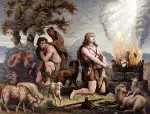
In his commentary on this week’s Torah Portion, Yitro, Rabbi Chayim Vital, writing in the name of his teacher, the Ari-zal, states that Abel was
The current Torah portion Beshalach tells about the splitting of the Sea of Reeds. As I discussed in my essay, “Collapse and Revelation,” the splitting
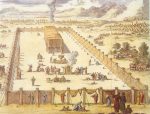
We are quite familiar with space—we move freely in space back and forth; we concur space on land and beyond; we reclaim land from sea;

The collapse of the wave function is the process of revealing hidden possibilities. Reducing uncertainty reveals information. Until the wave function collapse, the system is
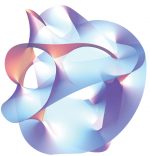
And they made their lives bitter with hard service, in mortar and in brick… Exodus 1:14 On a literal level, the Egyptian exile (Galut Mitzrayim)

The Torah portion Vayakhel deals with the construction of the Mishkan, i.e., the “Tabernacle.” In Kabbalah, the Mishkan is viewed as a microcosm that represents

On the Eve of Shabbat, we received a government mailing containing documents that we were required to fill out and send back to the Census
In my post, “Ye Shall be Disentangled,” I suggested that the verse: “Ye shall be holy, for I, the Lord, your G‑d, am holy” (Levit.
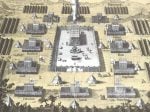
Vectors, Spins, and Gender Speak to the children of Israel, and have them take for Me an offering; from every person whose heart inspires him
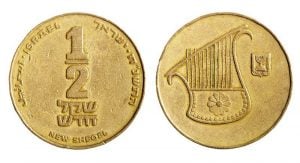
This they shall give, everyone who goes through the counting: half a shekel according to the holy shekel. Twenty gerahs equal one shekel; half of

At the end of the weekly portion, Tetzaveh, the Torah speaks of the burnt offerings (Heb. qorbanot) and the incense offerings (Heb. qetoret). The Lubavitcher

And thou shalt make two cherubim of gold; of beaten work shalt thou make them, at the two ends of the ark-cover. And make one

This is the thing which the Lord hath commanded: Gather ye of it every man according to his eating; an omer a head, according to
Reading the Haftorah this Shabbat brought to mind scenes from the 2004 Republican National Convention in Madison Square Garden in New York City where attendees where
And let them make me a Sanctuary that I may dwell among them (Ex. 25:8) In modern physics, there are two paradigms usually expressed as locality
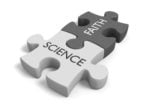
The Torah portion of Yitro (Ex. 18), is the high point of the story of Exodus—the giving of the Decalogue on Mount Sinai. In a strange
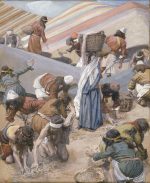
And the house of Israel called the name thereof manna; and it was like coriander seed, white; and the taste of it was like wafers
Do you like riddles? Here is a riddle – what do these two figures represent in the context of Exodus? No Idea? How about
And the answer is… (drum roll, please) Yes, the first figure represents two doorposts and the lintel marked with blood of Passover sacrifice and circumcisions as
There were some good ideas expressed in the comments. Close, but no cigars. Here are some hints for you folks: 1. These two pictures express
I’ve never done this before on this blog, so this a first — a riddle: What do these two figures represent? Please post your answers in the Comment
Bo: Exodus 10:1 – 14:16 The Erev Shabbat parshat Bo (the Eve of Sabbath of the week when we read the Torah section Bo) 2014

As we have discussed in the post, It’s the time, stupid, Pharaoh never got the message that it’s all about mastery of time. To make
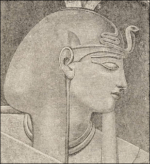
There is a continuous thread about the mastery of time that weaves through the last chapters of the book of Genesis (Bereshit) and continues through

It is unsurprising, then, that spiritual phenomena have never been experimentally detected in a laboratory setting. Spirituality, by definition, is non-physical. Consequently, no physical laboratory
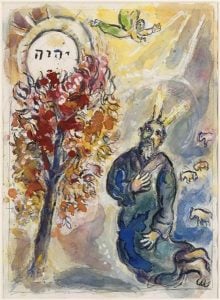
…And behold, the thorn bush was burning with fire, but the thorn bush was not being consumed.” (Ex. 3:2) Every theologian worth his salt along

And the angel of the Eternal appeared unto him in a flame of fire out of the midst of a bush; and he looked, and,
I came across a post by Rabbi Herzl Hefter on Mekom Torah that I found so profound, I felt compelled to repost it here. The